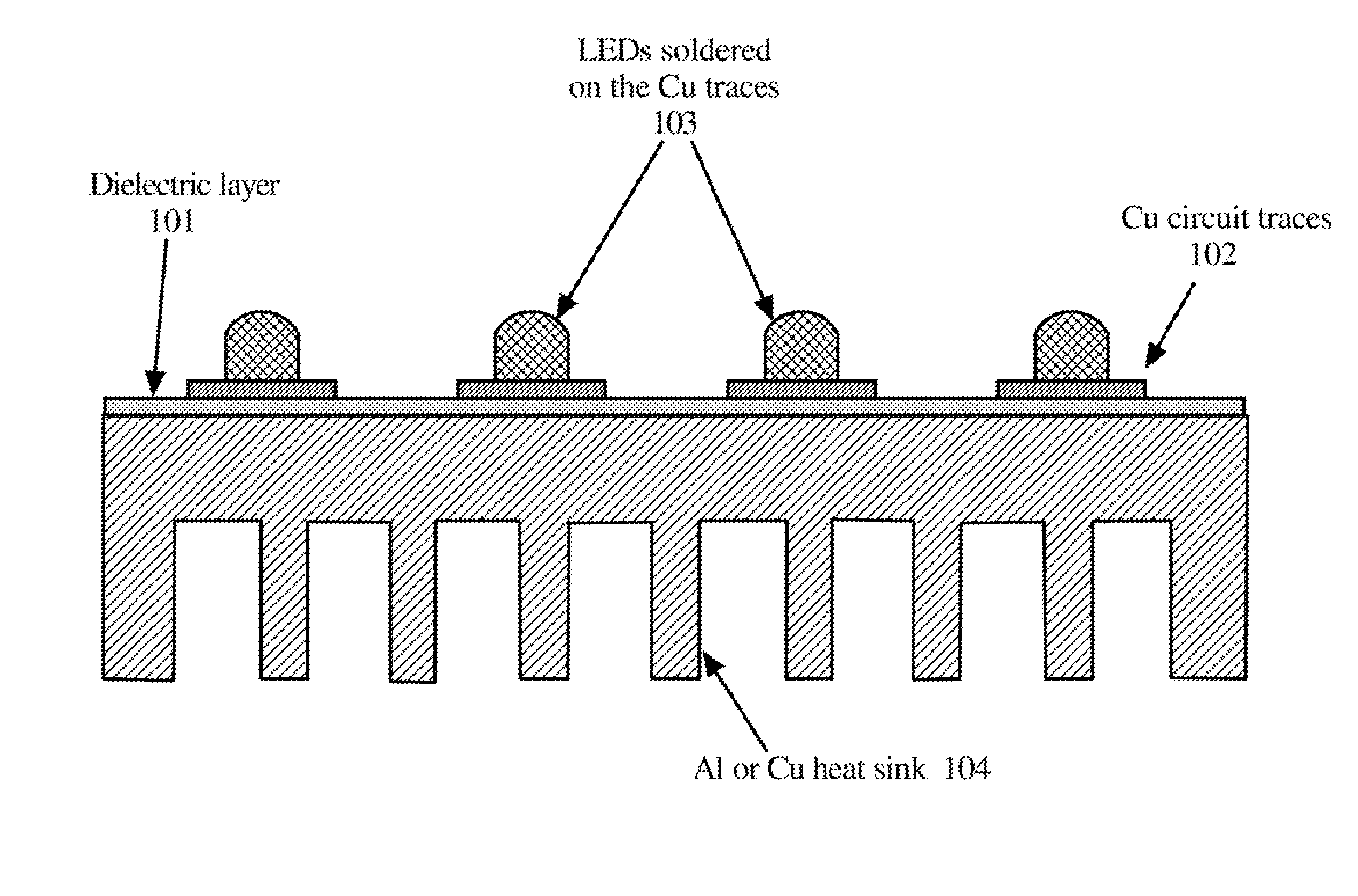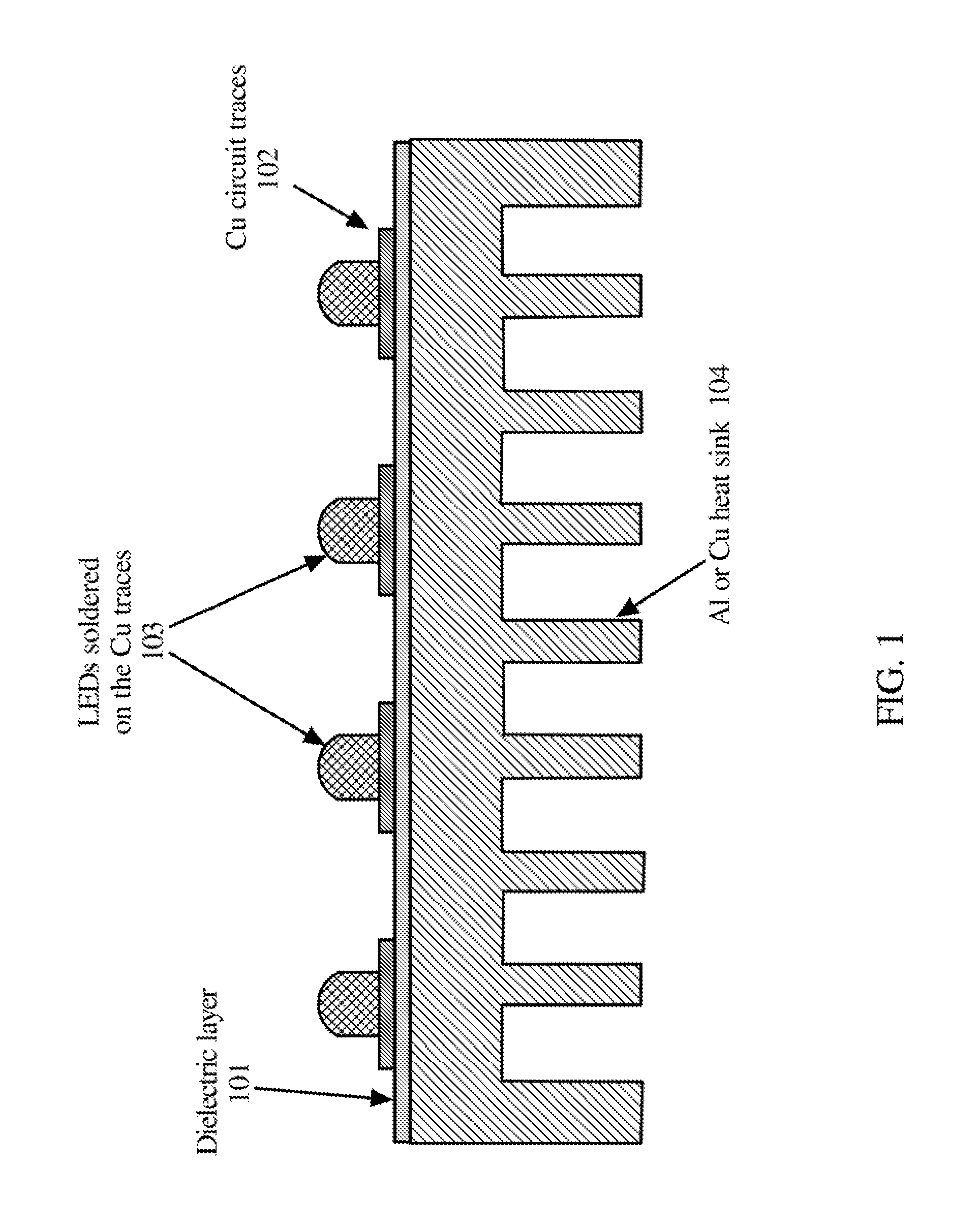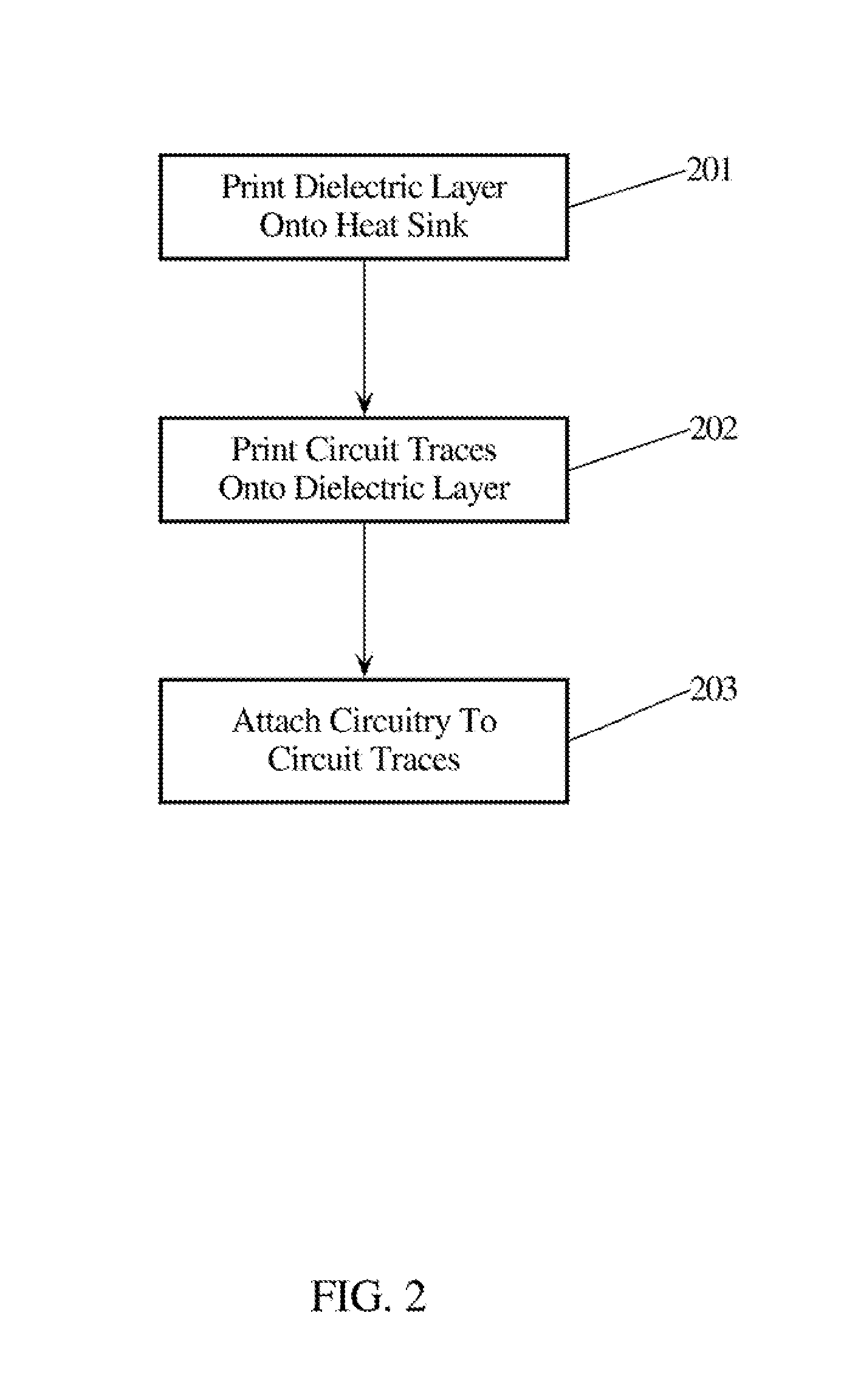Application of Dielectric Layer and Circuit Traces on Heat Sink
a dielectric layer and circuit tracing technology, applied in the direction of resistive material coating, surface pretreatment, synthetic resin layered products, etc., can solve the problems of reducing the life of the led, implementing energy-saving leds, and reducing the light output, so as to increase the overall heat transfer of the board, increase the thermal conductivity, and high performance
- Summary
- Abstract
- Description
- Claims
- Application Information
AI Technical Summary
Benefits of technology
Problems solved by technology
Method used
Image
Examples
Embodiment Construction
[0023]Referring to FIG. 1, embodiments of the present invention directly apply the dielectric layer 101 and Cu circuit traces 102 on the Al or Cu heat sink parts 104 so that one can eliminate the use of separately manufactured LED circuit boards. A process for making embodiments of the present invention may first start with a preparation of the surface of the heat sink part 104 such as polishing such a surface. The dielectric layer 101 is directly applied onto the surface of the heat sink part 104, such as in accordance with the various examples described herein. For example, the composition for making the dielectric layer may be made into a paste or ink and then printed as a paste or ink, or applied with some other equivalent method for applying a paste or ink. Or, a lamination process may be utilized, as further described herein. The electrical circuit traces are then applied (e.g., printed as an ink or paste, lithographically patterned) onto the dielectric layer 101 in the requir...
PUM
| Property | Measurement | Unit |
|---|---|---|
| density | aaaaa | aaaaa |
| thickness | aaaaa | aaaaa |
| thickness | aaaaa | aaaaa |
Abstract
Description
Claims
Application Information
 Login to View More
Login to View More - R&D
- Intellectual Property
- Life Sciences
- Materials
- Tech Scout
- Unparalleled Data Quality
- Higher Quality Content
- 60% Fewer Hallucinations
Browse by: Latest US Patents, China's latest patents, Technical Efficacy Thesaurus, Application Domain, Technology Topic, Popular Technical Reports.
© 2025 PatSnap. All rights reserved.Legal|Privacy policy|Modern Slavery Act Transparency Statement|Sitemap|About US| Contact US: help@patsnap.com



